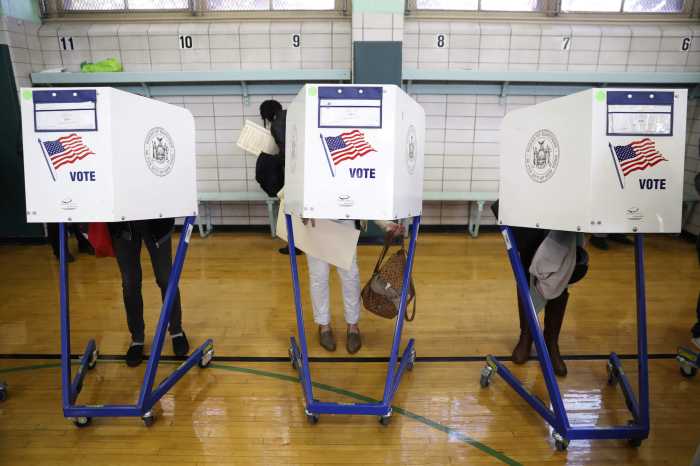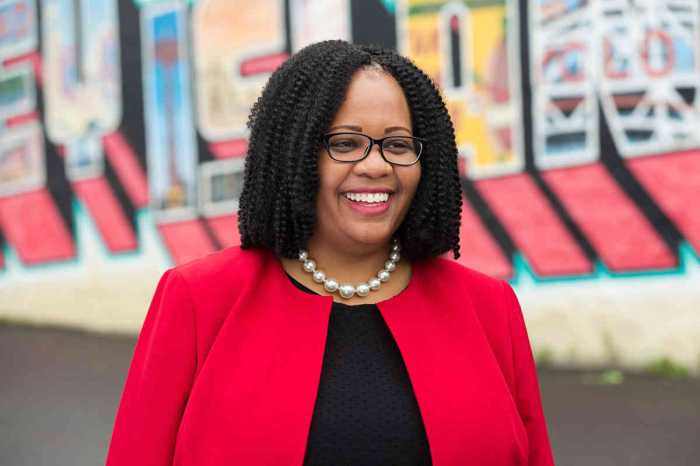On Tuesday, the New York City Board of Elections will start an absentee ballot count unlike any in its history.
The count of at least 150,000 scannable ballots will make or break Democratic primary campaigns in at least 11 close legislative contests across the city — including one Congressional race involving a long-term incumbent.
Tens of thousands of New Yorkers took advantage of Gov. Andrew Cuomo’s executive order easing absentee ballot voting regulations for the June 23 primary due to the COVID-19 pandemic. Polling sites and early voting locations opened nonetheless, though turnout was exceptionally light.
The absentee ballots had to be received on June 23 by the Board of Elections, or at least postmarked on June 23 and received days later. Even though New Yorkers had to request the absentee ballots themselves, the latest Board of Elections figures indicated that it had received absentee ballots from one in five New Yorkers who sought them.
All told, the Board of Elections has the task of counting at least 152,959 absentee ballots across the five boroughs, starting Tuesday. That number could go up on Monday when the board is expected to update their total of absentee ballots received.
The absentee ballot count figures to have its most significant impact on the 12th Congressional District primary, a four-way race currently led by incumbent Congresswoman Carolyn Maloney. The district spans much of Manhattan from Midtown to the Lower East Side, and includes parts of northern Brooklyn and western Queens.
After all the early and primary day votes were counted Tuesday, Maloney — who’s been in office since 1993 — emerged with a razor-thin lead over her closest rival, attorney, and activist Suraj Patel. With 99 percent of the scanners counted, Maloney had 16,473 votes, compared to Patel’s 15,825 — a difference of just 648.
But the June 26 Board of Elections numbers for the 12th District found that there are 30,538 absentee ballots in out of 109,376 requested. To overcome the deficit, Patel would need to emerge from the absentee ballot count with 649 more votes than Maloney — that figure represents just 2.1 percent of the current absentee ballot total for the district thus far.
There are also 10 close state Assembly primaries across the city that the absentee ballot count will ultimately decide. Several of these contests involve incumbents in serious danger of losing their seats.
The 36th Assembly District in Astoria has progressive activist Zohran Mamdani poised to spring a stunning upset over incumbent Assemblywoman Aravella Simotas. After Tuesday’s voting, Mamdani had a 589-vote lead on Simotas, who’s represented the district since 2011.
But the Board of Elections notes that they had 6,880 absentee ballots from the district as of June 26. The current gap between Mamdani and Simotas represents just 8.5 percent of that total.
In Brooklyn’s 51st Assembly District, incumbent Assemblyman Felix Ortiz leads opponent Marcela Mitaynes by just 464 votes as of Tuesday’s voting. As of June 26, over 800 absentee ballots were received by the Board of Elections for the district — all of which will decide the fate of Ortiz, who has served the majority Sunset Park district for a quarter-century.
In the Crown Heights-anchored 57th Assembly District, incumbent Assemblyman Walter Moses III leads resident nurse and tenants activist Phara Souffrant Forrest by just under 600 votes — meaning the more than 2,500 absentee ballots received by the Board of Election as of Friday certainly hold some weight.
Tight Assembly primaries impacted by the absentee count

It’s hard to determine whether the absentee ballot count will snatch victory out of the jaws of defeat for some of those who currently trail their contests — but it’s happened before.
In fact, it happened last year.
The June 2019 Queens district attorney primary saw public defender Tiffany Cabán come away with a narrow, 1,100 lead on election night over her closest challenger, then-Queens Borough President Melinda Katz. Though the margin suggested that Cabán was on her way to victory, Katz declined to concede and insisted on waiting for the absentee ballot count.
The following week, the Board of Elections pored through more than 6,000 absentee ballots during their count. By its conclusion, Katz had overcome that deficit to take a 16-vote lead — prompting an automatic recount. The board then had to go over, by hand, all 93,000 votes received in the contest to determine the winner.
Cabán wound up conceding the race in early August after the Board of Elections certified Katz as the winner by just 55 votes. Katz would be elected as Queens district attorney in November.
This story first appeared on AMNY.com
























